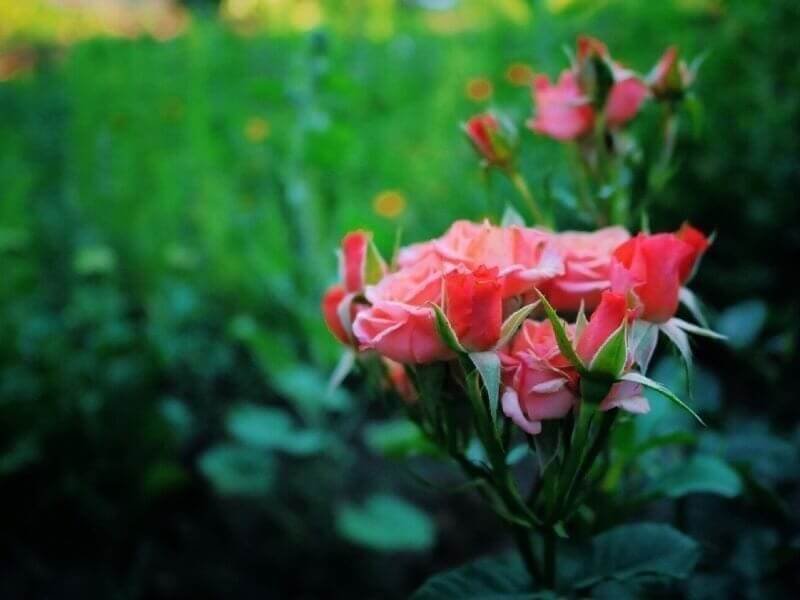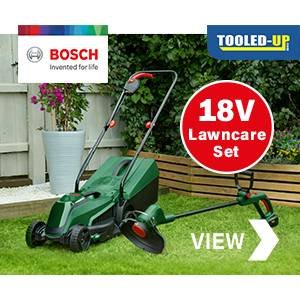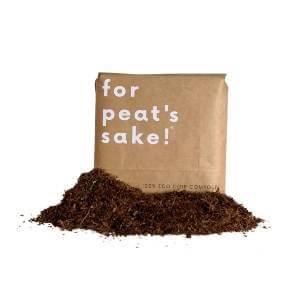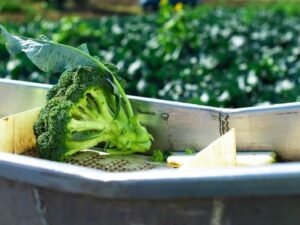Greenfly, froghopper and rose scale are the main problems you may find on your roses stem. Here are some tips on how to spot and how to be rid of these pests;
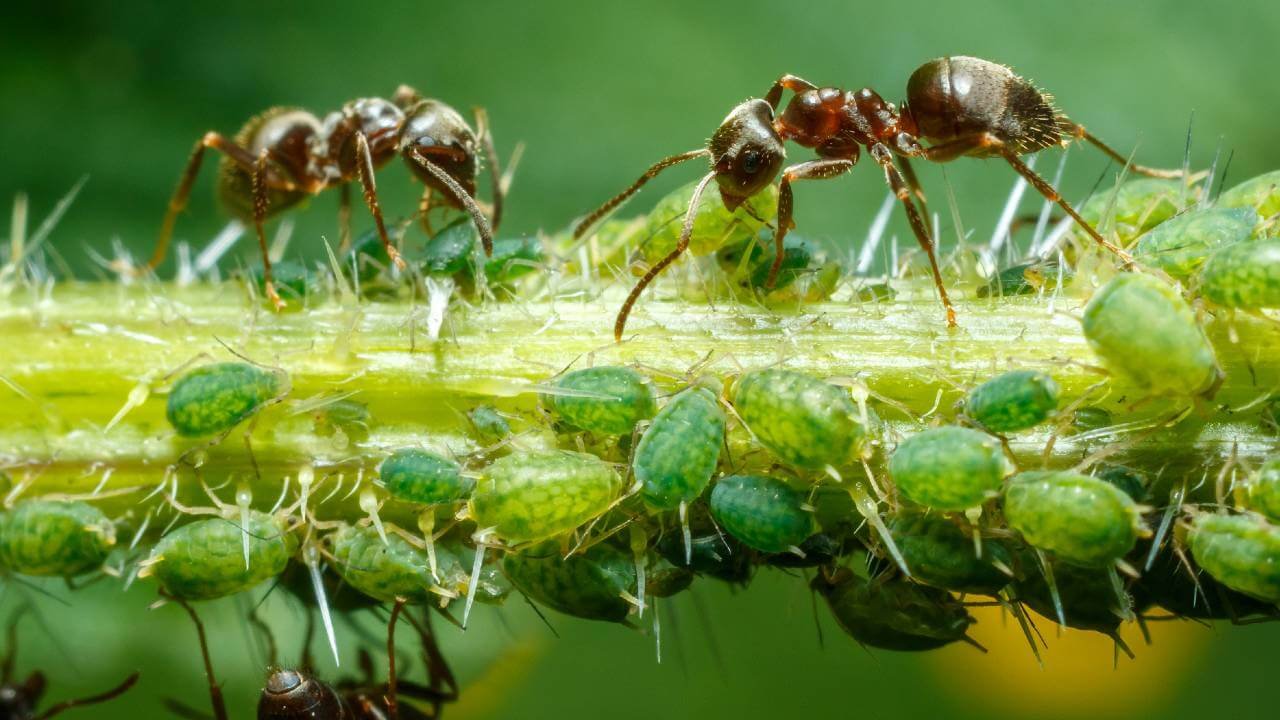
Greenfly (Aphid)
How to spot if you have greenflies
Greenfly is the most common and most serious of all rose pests; they can cause growth distortion or completely stop growth, infested buds may fail to open.
Due to these pests being almost naked to the human eye, there are a few telltale signs which you may have noticed on closer inspection:
- The best way to search on young stems under leaves or buds where you may see colonies of aphids hiding.
- Physical appearances in your plants may start to alter specifically in the places where you will find colonies; you may see plants wilting or starting to distort (twisting in the leaves) yellowing on the leaves or even death in the worst scenario. If you’re wondering why they head to these parts of plants well this is their preferred place to feed.
- You may notice honeydew on leaves and fruit this is a stick sweet substance and the best sign to know if you have aphids.
- Due to this being a sweet substance it will most likely attract a large number of ants to the surrounding infested plant – so be on the lookout for these as well!
- Honeydew can soon become covered by a black fungus (sooty mould!)
- Although the common name of green or black fly these bugs do come in various colours; pink yellow mottled or white; however most are green and grow to around 1-7mm.
How to get rid of greenflies?
There are a few organic methods below that you can use before going onto the pesticides; however, if you have a significant infestation its best to sort this out quickly using a pesticide;
Using Pesticide
The best way to tackle aphids is by looking out for a pesticide containing dimethoate that will go inside the plant, so the spray misses the foliage. Alternative spray with a contact insecticide such as Multi rose, Liquid Derris or Sprayday.
Spraying with Water
Using a hose or placing it in the shower and spraying water over them can knock the aphids off to which they won’t be able to return.
Spraying water will also rinse off some of the honeydew stuck onto it. Keep spraying every day until it is aphid free.
Use Aphid enemies
Another suitable organic method is using the natural aphid enemies against them; this can only really be used in the garden and when the infestation is medium to low.
These enemies are; lacewings or ladybirds/ladybugs who will feed on the sugary aphids, to attract these enemies in plant mint, fennel, dill or dandelions in your garden.
Hopefully, this should stop the aphids from multiplying. You can also try planting onion or garlic near as the smells will deter the aphids.
Neem Oil
Neem oil is an excellent use for inside the home; it is safe for children, animals and plants themself. The best way to explain how this works is by using Azadirachtin acting as a repellent and reducing insects from feeding. As well as also disrupting hormonal balance, meaning they moult to the next stage of life.
Pinch them out!
A straightforward but maybe a bit time-consuming method is to pinch these off with your finger or thumb or prune the part of the highly infested plant.
Froghopper, Cuckoo-spit, Philaenus spumarius
How to spot if you have froghopper
Also known as a spittlebug, attacks will take place typically between May-September. Both the larvae and the adults eat away at the plant sap and xylem.
There are many different species of the froghopper which does make them hard to identify, but here are a few telltale signs of the Philaenus spumarius;
- You may notice first frothy white spittle on the shoots and the main stem – which is where the nymphs live; this is known as the cuckoo spit and is the protective layer for them.
- Although the nymphs are hidden amongst the cuckoo spit these are 4-6mm and creamy white colour.
- The froghoppers are harder to identity; typically they are around 5-7mm in length are small black/white and many shades of brown insects that can jump great distances when threatened.
- Affected shoots are distorted only typically if the nymph has been feeding at the shoot tip.
Although not currently in the UK, Xylella is a bacteria disease that can lead to die-back, wilt, leaf scorch and, in the worst case, death. Predominately evident in Southern Europe and causing severe problems. In brief, this disease spreads by insects that feed on the xylem, and some fear imported plants could spread this.
How to get rid of froghopper?
Although the effect of froghoppers can be unsightly, the damage is minimal to the plant’s vigour, and they should be considered part of the biodiversity to support the garden. Therefore we would not suggest using chemicals to control them.
If only a few shots are affected, wipe off the froth or spray forcible with water to clear.
Rose Scale (Aulacaspis rosae)
How to spot if you have Rose Scale
Like all other scale insects, this bug feeds on the plant sap. Laying their eggs in July or early August, and are ready to hatch from late August to September.
They will typically attach to the stem of roses that grow in damp, shady areas.
- You will notice small scurfy scales form a crust on the old and neglected stems. These scales appear as a white coating.
- These scale insects will be typically found on the underside of leaves or branches.
- Weakened growth and new growth can be stunted.
- The scale bug itself blends in well so it can be hard to spot; as adults they are immobile and covered in a “waxy-shell”.
- Male scales are narrow greyish/white and up to 1mm in length. Whilst females are larger and 2.5mm long and more pear-shaped.
- You may notice the nymphs on the plant material; these are an orange colour and will develop into male scales in May-June; whilst the females remain under the scale.
How to get rid of Rose scale?
Large infestations can reduce your plant’s vigour; however, where possible, these can be tolerated – and luckily, unlike other scale insects, this species does not produce honeydew.
We would suggest tackling attacks during mid to late summer when newly-hatched scales are present, making them more vulnerable. Rose scale can be hard to get rid of, so try to do as much to prevent this.
Remove adults
You can remove adults scale and egg masses. Unfortunately, this will not reduce heavy infestations.
Controlling outbreaks
Small outbreaks can be controlled by paining affected areas with methylated spirits or neem-based leaf shine.
Prune infested areas
Stems that are infested can be pruned and removed, followed by disposing of them.
Encourage natural predators
Natural predators like ladybirds/ladybugs, parasitoid wasps, hoverflies, and birds should be encouraged into your garden as they eat scale insects.
Last case scenario – Use pesticides
If the above methods do not work on heavy infestations, you can move on to pesticides, Resolva Bug Killer and Bug Clear Ultra. Please be mindful that plants in flower should not be sprayed to harm pollinating insects such as bees.

